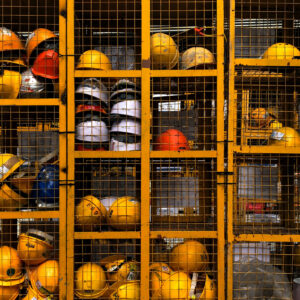 How to be a great CRSP and CRST test taker
How to be a great CRSP and CRST test taker
We’ve talked a lot about planning so far and how to approach scheduling. However, the key point which is foundational to success is being realistic with yourself. No matter how detailed or specific your plan is, if it isn’t realistic and reflective of your circumstances, then it will not work. Individuals and companies who do not have expectations that reflect the reality of their circumstances always end up with a result that falls short or is not what they were aiming for. Not only that, but it also often creates unnecessary stress and losses.
In order to really be effective and see the results you want; you must be realistic.
Tip #1: Give yourself enough time for the examination.
Give yourself enough time, be honest about how fast you can work or study. Make your schedule and look over the references I’ve mentioned previously. Take a detailed look into each of the competencies and really determine how much time you would need to spend learning and practicing.
For the most part, people tend to underestimate how much time it takes to become comfortable with the subject matter, and don’t account for other factors. By really being honest with yourself, you can avoid unnecessary stress and failure.
That being said, by taking the time to create a schedule which reflects your situation, you will save a ton of time that could have been lost to disorganization, stress, and poor planning. If you’re interested in a program which covers all of the key concepts of the certification exam in detail and is designed to help maximize the efficiency of your studying, check out our CRSP and CRST exam crash courses!
Tip #2: Practice focusing.
Moving on, an issue many people face is problems with concentration in the moment. Many candidates bring this up and say that although they are able to create an effective plan, oftentimes, they are not able to stay focused in the present moment when they are studying. This leaves them feeling resigned. I’ve personally experienced this myself and still to this day experience it in my work. It’s important to accept that this is normal! It’s normal to not be able to sit and concentrate on one thing for 6 hours a day.
Especially when you haven’t had a lot of practice doing that. As mentioned earlier, you need to be honest with yourself and factor that into your timeline. If you recognize that within 6 hours of time you can only put out 3 and a half to 4 hours of high-quality focus then adjust your timeline to reflect that. As you practice you will improve and become more effective. This is all part of the process. You can consider removing unnecessary distractions from your immediate space and communicating with your loved ones to make adjustments for you to study without interruption.
It is hard to give an exact instruction on how to focus and concentrate on work. Our best advice is to first, practice noticing what distracts you. Your phone, computer games, emails, people in your household, eating habits, etc. are all examples of what you should watch for. Pay attention to your emotional and sensory distractors. If you are mad at someone or something, or if there is someone making noise in the area you study, you have to find a way to bring yourself back to your original commitment for the exam. Remember, “Why are you writing the examination?” If you use our videos and slides, make sure that you pay attention to both what you listen to and the notes on the slides. Sometimes you may need to review a slide/section multiple times. Listening and reading the slides will help you to concentrate better.
One of the best ways to prepare for the examination is to practice with questions and exams similar in style and difficulty. While no practice exams completely mirror the official BCRSP exams, several resources are available for you to practice and assess your CRSP and CRST readiness. Make sure you practice with multiple choice questions at the end of each chapter. Read the practice questions very carefully. Also, if you stick to a routine, realistic, and effective study schedule, your brain gets used to it and can focus much better. For many people coffee impacts the brain performance at high dosages so make sure you consume coffee at a moderate level.
Tip #3: Learn how to answer different question types.
There are two types of questions in the CRSP and CRST examinations: multiple choice and case-based.
Multiple choice questions can be handled in several ways. The most common method is the process of elimination. (Tip: we recommend that you practice using this approach for the exam.) Elimination requires you to narrow the options down to the two most probable solutions. In other words, if you can get the question down to a 50/50 chance, you have the highest probability of success even when dealing with the most difficult questions.
Although this method is effective, it might not always work, and you should expect to find questions that you are not sure about. In these situations, it’s best to circle these questions so you can go back to them at the end of the exam. This will optimize your time and, in most cases, circling back to the question often provides you with a new perspective to approach it from.
Another method is to read each option separately and determine whether it is true or false. This can focus your mind on what the question is asking specifically and avoid confusion. Third, if you come across a question which you have completely no clue about, simply take a guess! It is important that you leave yourself at least 15 minutes at the end of the exam to review your answers and ensure you didn’t make any silly mistakes, especially on the questions that you are not sure about.
Keep in mind that answering all the easier questions first and flagging the harder ones for review at the end has drawbacks as you can be left with quite a few challenging questions to answer in a relatively short period of time. The last piece of advice is that on the day before the exam, set aside all your study materials and do something you enjoy which doesn’t involve reading technical reference materials or cramming for an exam. Catch up on shows you’ve missed while studying, go out for a bike ride, or hang out with friends and family! Whatever you do, remain confident in the study plan you created and followed, and find as many ways to relax as possible. de this solution.
Case-based questions make up roughly 50% of the CRSP and CRST exams. These cases usually consist of a long scenario with one or several multiple choice questions at the end. Many candidates complain that these long scenarios take a lot of their exam time. Although they are time consuming, the idea behind these cases is to test your comprehension and rational power around daily health and safety issues. The most important advice around these types of questions is to read the main question being asked by the case first and briefly scan through their answers. By holding the question in mind, your ability to comprehend and concentrate on the scenario increases drastically. If you have problems with concentration, you must practice developing this skill in your studies.
Tip #4: Take our CRSP exam prep crash course.
If you’re interested in learning more about our CRSP and CRST exam crash courses, check out the different packages we offer. The crash courses have been designed based off BCRSP study materials in order to give you a set structure that’s easy to follow and effective. They include several hours of video lessons and hundreds of detailed slides. The videos are captioned and organized to follow the CRSP and CRST study materials listed on BCRSP website.
Our exam crash courses also include over 1,500 sample questions spread out across each module to test your understanding and comprehension. We’ve also included sample CRSP and CRST final exams made to reflect what candidates should expect to see on official BCRSP examinations.






